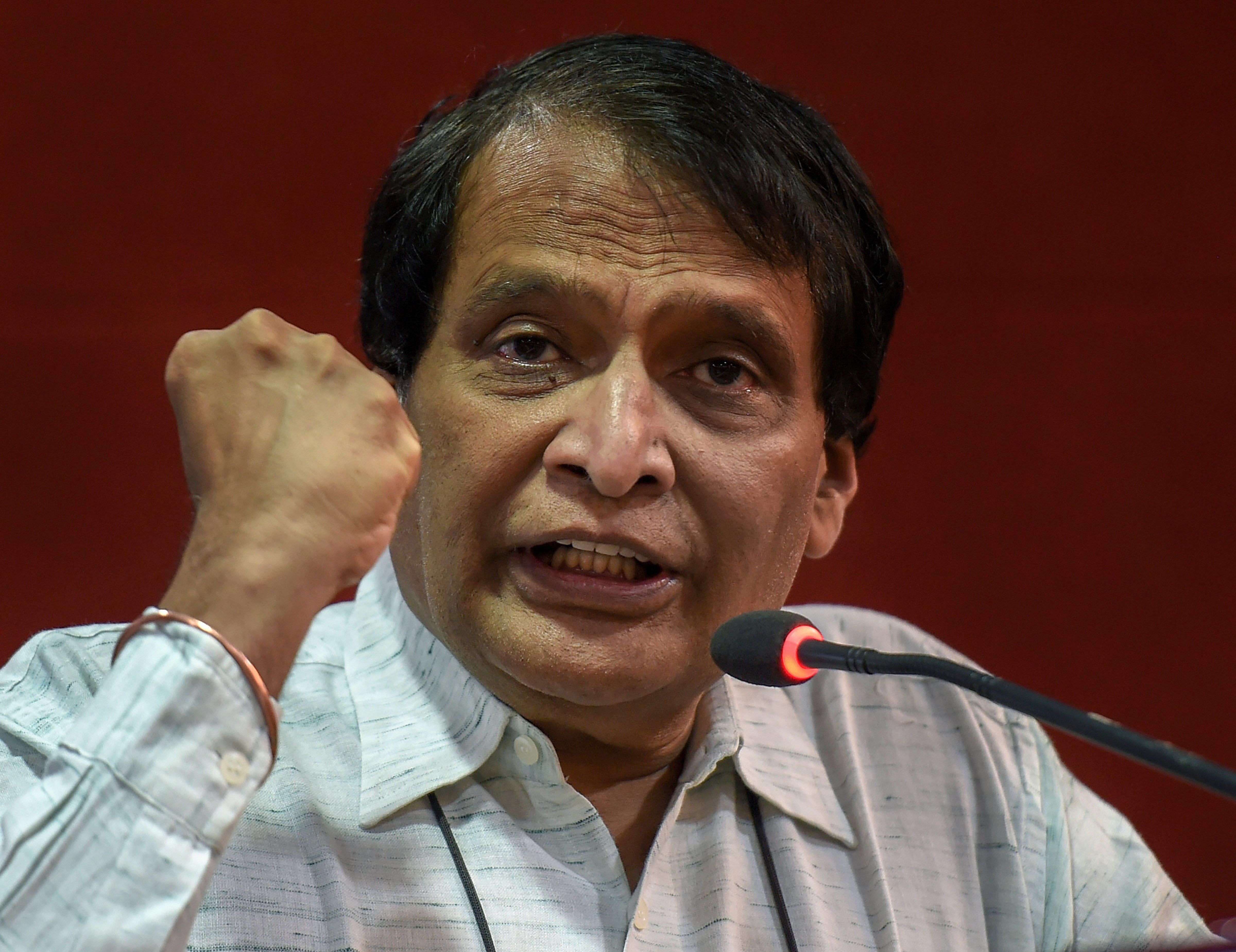India, Russia and Iran will hold a trilateral meeting on the International North-South Transport Corridor on November 23 to make the 7,200-km ship, road and rail route operational soon, an official statement said on Monday.
Indian Union Commerce and Industry Minister Suresh Prabhu held a meeting with a Russian business delegation on raising investments and business between the two countries on Saturday, where he said "all issues may be resolved in order to operationalize the route as early as possible", Indian television media company New Delhi Television Limited reported on its website.
Prabhu said the corridor is an important initiative taken by India, Russia and Iran to promote transport cooperation and enhance connectivity with Central Asian countries.
"INSTC is the shortest multimodal transportation route linking the Indian Ocean and Persian Gulf via Iran to Russia and North Europe," the Ministry of Commerce and Industry said in the statement.
"The estimated capacity of the corridor is 20 to 30 million tons of goods per year and will reduce time and cost by 30% to 40%," it added.
Russia has invested $1.2 billion in India between 2000-17 in oil and gas, defense equipment supplies, power and energy and large-scale infrastructure projects.
The Russian Railways JSC said in April that it was discussing the formation of a logistics operator for the International North-South Transport Corridor with Iran, India and Azerbaijan.
Alexander Misharin, first deputy chief executive officer of Russian Railways, made the statement to reporters on the sidelines of the “TransRussia” international exhibition for transport and logistics services and technologies.
INSTC is designed to connect Northern Europe with India and Southeast Asia. The route will also connect the railroads of Iran, Azerbaijan and Russia.
At the initial stage, 5 million tons of cargo are planned to be transported through the corridor annually and over 10 million tons of cargo in the future, with Iran at the core of the corridor.
Iran, India and Russia have been holding talks to activate INSTC since 2000, through the existing road route and with the development of some railroad gaps in between the multimodal network of ship, rail and road.
“INSTC was discussed during Iranian President Hassan Rouhani’s visit to India in February while Russia maintains a strong interest in the trade route,” P S Raghavan, convener of National Security Advisory Board in the Indian government, has been quoted as saying.
“It is not only to make Indian-Russian trade or Indian-European trade profitable, actually it will make it very lucrative for east Asia and southeast Asia exporters. There is nothing to stop INSTC from being activated in a matter of months.”
Raghavan noted that capacity building can be carried out, as trade volume increases and progress is made on related issues, adding that the potential is enormous.
Going beyond Prabhu's estimate, Raghavan said INSTC cuts transportation time and cost by half compared to the Suez Canal route.
The current shipment through Suez Canal route involves a longer distance and is expensive, as well as congested.
INSTC could ease exports from India’s west coast, through Iran’s Bandar Abbas and Chabahar ports, Central Asian states, Russia and onwards to Europe.
“Indian-Iranian-Russian customs have discussed transshipment processes while logistics such as containerization needs to be sorted out,” Raghavan said.
“It needs a special purpose vehicle of multinational capacity to manage the transportation network from end-to-end.”
In 2014, the Federation of Freight Forwarders Association of India had a dry run on INSTC.
INSTC member states recognize the potential for efficient and seamless North-South transport caused by economic globalization and by ever-increasing trade within the Eurasia region, the forwarders had said in a report at that time.
The rail link between Astara in Azerbaijan and the namesake town on the Iranian side of the border was officially opened in a ceremony on March 29 concurrent with the visit of Iran’s President Hassan Rouhani to Baku.
Around 7,600 tons of freight have already been carried on the route, which forms part of INSTC, since the operation of the first freight train on Feb. 8.
The 10-km extension of Azerbaijan’s 1,524 mm gauge rail network runs for around 8.5 km in Azerbaijan and 1.5 km in Iran, including an 82.5-meter-long, 8-meter-high and 11.8-meter-wide bridge over River Astarachay that forms the border. It was built at a cost of around $60 million, financed by Azerbaijan, including a 35-hectare freight transshipment facility that will be operated by Azerbaijan’s national railroad ADY under a 25-year BOT agreement with the Islamic Republic of Iran Railways.


